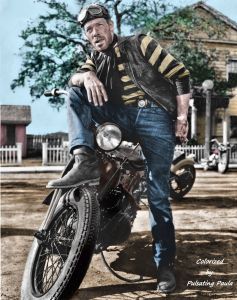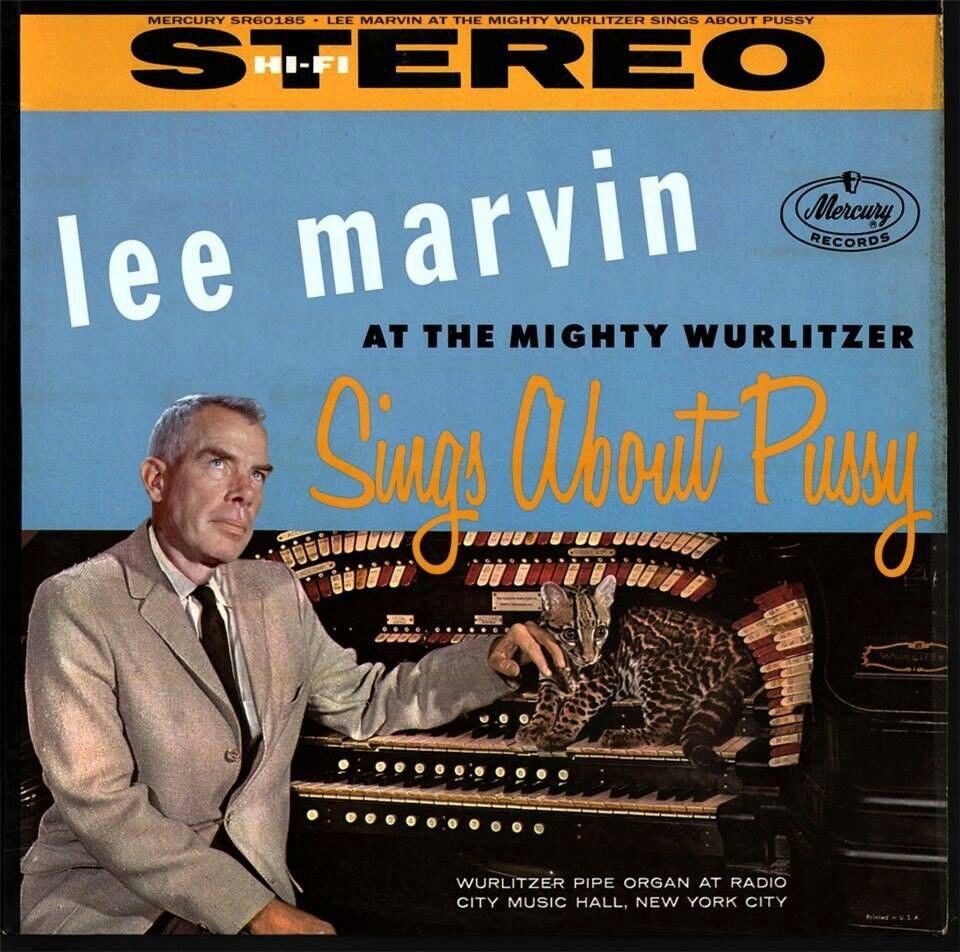
There’s a scene in The Iron Curtain of 1948 that stands out for me. A young married Russian couple, fresh from the bleak streets of Soviet-era Moscow, is surveying their new apartment in Ottawa, where the husband, who works in the Canadian Soviet embassy, has been assigned. The apartment is tiny and drab; the sunlight sparse, the furnishings cheap, the layout utilitarian, at best. Traces of previous tenants can be seen in the dirt streaks on wallpaper denoting absent picture frames. Yet as the camera circles round this flat little flat, the wife gazes at her husband with shining eyes. For her, this place is the last degree in luxury. It’s home.

Trust me, I know what’s drab and what’s not in living spaces. I’m addicted to those YouTube videos that demonstrate 32 DIY ways to jazz up your gloomy little rental and not bust your budget. On one level, the movie is making an obvious comparison, so dear to the pinched heart of Cold-War Hollywood: Look what the USA has got, look what the USSR hasn’t. Remember the Moscow scenes in Ninotchka, with Garbo squeezed into one roped-off corner in an apartment shared with two other ladies (one of whom gargles) that also serves as the pathway to a common john? On another level, though, the movie has grasped at something beyond politics. There may be hardcore Bohemians out there who can call a corner and a knapsack home, but for the rest of us, the space we hang out in is important. It needs comfort and safety and, yes, space itself—a place where we can step on a floor without stepping on another occupant.
And if that floor happens to be parquet rather than linoleum, so much the better. That brings me to yet another, meta-level in this scene. It gets at a part of what appeals about classic-era Hollywood films (what certainly appeals to me): design. Rooms, spaces, interiors, décor, so gorgeously, heart-catchingly beautiful, I just want to dive into the screen and stretch out on a chaise lounge (the more Art Deco-y, the better). Many bloggers rave about Hollywood costumes and fashions, but for me, the set design, or “art direction,” is what grabs my eye. I will gladly cede you Travis Banton and Walter Plunkett if you’ll hand over Cedric Gibbons and Anton Grot. Watching that starry-eyed little Russian wife, who’d probably been living in a Ninotchka-esque dump before getting three rooms and a closet all to herself, I found myself sympathizing. Sister, I said, I understand. Not just any place you hang your hat is home. A little bit of elbow room (plus matching end tables) helps.

Otherwise, The Iron Curtain is one of those grim, cheerless Hollywood Cold War docu-dramas (the title refers to the Soviet Union, not a window treatment) that proliferated like dandruff from movie studios after WW2. Frank Miller at the TCM site thought the film low-key and sensitive, but I confess I found it dull. It has some nicely done noir-lighted scenes, which should get the noir fans excited; William Wellman’s direction is unflashy, focusing basically on faces—people in conversation, talking, arguing, commanding, confiding. Like all late-1940s docu-dramas, the film, beginning with a stamping hand that pounds the title into the screen, wants us to know that it’s Serious. Every detail, no matter how minor, is played for keeps. Even when we’re shown the washroom (“This is the washroom,” one character intones glumly, as if wishing he could wash elsewhere), we know this is a SERIOUS washroom. No powder-room frivolities allowed here.

The story is based on the true-life Gouzenko affair, concerning a Soviet embassy cipher decoder who defected to Canada in 1945 and blew open a Soviet spy ring operating in Ottawa. Gouzenko (played with clenched-jaw grimness by Dana Andrews) and his family spent the rest of their lives essentially in hiding; and his revelations are said to be the start of the Cold War. Considering the film was made only three years after the events recounted, you’d think it’d have that ripped-from-the-headlines excitement. Yet it’s still dull. Andrews/Gouzenko spends many scenes literally filing documents in file cabinets. It might be Cold War intrigue, but filing is still only filing, no matter the context. If there’s not filing, then there’s talking. We watch Soviet operatives recruiting contacts—those are the noir-lit scenes—or holding meetings. Lots of meetings. With long takes of people sitting or standing. They also take notes, or read messages. Or they open things: books, drawers, file folders. Oh, the drama of it. For a real thrill we get scenes of flipping identity cards. I nearly fell off my chair with the excitement. (I’ve even got the chair to prove it.)




I get it: Spycraft is boring. It’s a life of grey routine and unending paperwork, which the film captures in stern, exacting detail. (If James Bond is fantasy for the masses, those masses surely must include actual spies.) But’s it’s hard to make such scenes cinematically interesting. Wellman uses shadows, layered depths, suggestive pauses to create drama but the result is still snoozy, what with keeping track of all the message exchanges, code transfers, and de-coding directions. You gather that the Soviets were after the atomic bomb process, but the range of informants is weirdly sparse (just one elderly scientist spilling all?). The most eye-catching shot is the most atypical: a view of sexy Soviet secretary June Havoc and her legs—mainly her legs—as she smooths on a pair of stockings before vamping Andrews. I sensed a bit of the earlier, livelier Wellman here, a return to that pre-Code Old Adam who gave us Cagney shoot-‘em-ups and Joan Blondell/Barbara Stanwyck denudings. Otherwise, it’s back to the filing cabinets and washrooms, as a dour Andrews recites the Soviet code of spy conduct: “I must never permit myself to be more drunk than either my guests or my host.” A plot potential regrettably not followed through.


What makes these docu-dramas so dim is that, while plumping for individuality and democracy, they all look cut from the same cookie. Opening credits are stamped in plain courier typeface on a tweed background (to emphasize the source in typewritten documents?) and a Voice-of-God narrator supplies the who-what-where-when, just to let us know that, yes, this is the truth and by golly you better believe it. I suppose Fox, which produced this film along with several other, similarly themed flicks (Diplomatic Courier, which I wrote about here, The House on 92nd Street), was trying to make this stuff as true to life as possible and not sensationalize it. But I found myself more annoyed than gripped by scenes of Gouzenko attempting to defect: no one at the Canadian Ministry of Justice would meet him, the RCMP didn’t believe him, the newspapers weren’t interested. It took the Soviets breaking into his apartment to get the police involved. Oy, what does it take to decamp to the other side?

There are two performances of note, from Eduard Franz and Berry Kroeger as, respectively, a disillusioned Soviet army officer and a smug Soviet double agent who likes the good life. Franz, whose bald-eagle-beaked face slices through space whenever in profile, has a great scene, shot in a two-face closeup with Andrews, of his character recalling a war incident in which, recruiting troops for a risky mission, he had to shoot ten soldiers before an 11th volunteered. Franz digs right into the gut of the man’s self-disgust, his loathing of what he’s done, his whole fed-upness with what his career requires (Andrews reacts well here, his eyes building in panic as his face freezes). Even better is Kroeger, who in looks is Franz’s opposite: smooth, plump, soft, with cold eyes and plush lips curved in a perpetual ironic smile; he resembles a psychopathic Buddha. I enjoyed those little actory bits he worked into his performance, such as stroking leather gloves or fingering a fur collar while spouting Marx. He looks like he’d be right at home on a set designed by Grot or Gibbons. Truly a man after my own heart.






Patricia Nolan-Hall (@CaftanWoman)
/ September 18, 2018I have a soft spot for all American pictures that depict Canada. This one in particular for the line about Gouzenko finding Canadians to be a happy people even in wartime. We sound so nice and simple.
Grand Old Movies
/ September 18, 2018Yes, the film is quite positive about Canada and Canadians, a country not usually featured (as itself) in US films. The Gouzenko subject itself is also fascinating; I had no knowledge of it until I saw this film! Who says movies are not educational?